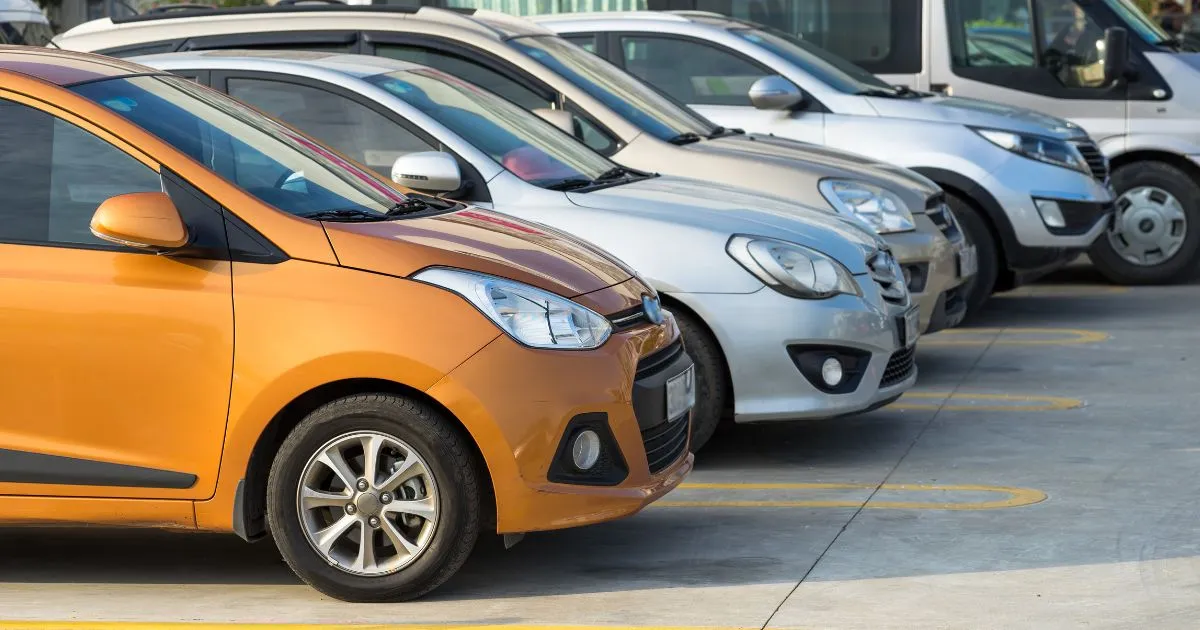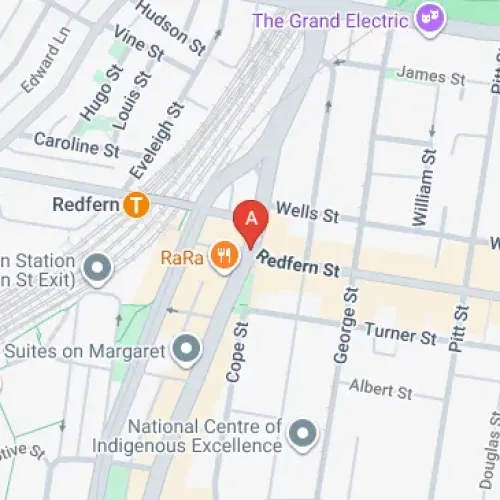7 Ways to Save Money on Monthly Parking in Australian Cities

Parking in Australian cities can often feel like an unnecessary strain on your budget. Whether you're commuting to the Sydney CBD, Melbourne's bustling centre, or Brisbane's expanding downtown, the costs can add up quickly. A recent study by the Parking Australia Association found that Australians spend an average of $1,200 annually on parking fees alone. However, with a few strategic moves, you can save up to 30% on monthly parking costs in urban areas. Here are seven actionable tips to help you cut down your parking expenses while still ensuring convenience.
1. Use Parking Apps
Parking apps have revolutionised how Australians find and pay for parking. These digital tools can save you money while streamlining the entire parking experience at various car parks and parking stations throughout the country.
- Save Money: Apps like EasyPark and Wilson Parking allow you to pay only for the time you park, avoiding unnecessary overpayment. Many providers also offer exclusive discounts through their apps, such as Wilson Parking's 20% off weekday Flexi rates if booked in advance.
- Convenience: No more scrambling for loose change or worrying about overstaying your time. Parking apps offer cashless payment options, real-time updates, and notifications, making city parking hassle-free.
- Broader Choices: Apps often display a range of options across CBDs and suburban hubs, letting you compare prices and amenities. Features like Early Bird deals are a fantastic way to save on all-day parking.
Sarah from Perth shared her experience that she had been using parking apps for the last six months and had saved nearly $200 on her regular CBD parking spot. The ability to extend her parking session remotely had saved her from countless fines!
2. Carpool with Colleagues or Neighbours
Carpooling not only reduces your environmental footprint but also helps lower parking costs at commercial parking facilities significantly. According to Transport for NSW, each shared journey can save up to 1.5kg of carbon emissions per passenger.
- Cost Sharing: Sharing a ride means splitting the parking fees. In areas like Sydney's or Melbourne's CBD, where daily parking can cost upwards of $50, this can lead to massive savings.
- Easy Coordination: Platforms like Coseats connect commuters with similar travel routes. You can also organise carpools with colleagues through workplace schemes or community groups.
- Added Perks: Some employers incentivise carpooling by offering premium parking spots or financial reimbursements.
As per Red Devil Radiators, "Carpooling allows participants to split fuel costs, tolls, and parking fees, resulting in substantial savings for all involved."

3. Leverage Early-Bird and Off-Peak Discounts
Timing your arrival at parking garages and parking stations can result in substantial savings, especially in major Australian cities. Our research shows that early-bird rates can be up to 60% cheaper than standard day rates.
- Early-Bird Deals: Providers like Wilson Parking and Secure Parking offer flat-rate discounts for early-bird parkers who enter and leave during specific time frames. This is ideal for regular commuters who can adjust their schedules.
- Off-Peak Savings: If your work hours are flexible, off-peak rates are often significantly cheaper. These discounts typically apply after 4 PM or on weekends when parking spaces are less in demand.
- Booking Tips: Use apps to pre-book or stay updated on promotions by subscribing to newsletters from parking providers. Booking a week or even days in advance can guarantee lower rates at popular parking spots.
As Daniel Battaglia, founder of Parking Made Easy, notes that with many offices and other workplaces not having enough parking of their own, this is an issue for people everywhere, and in growing numbers. Finding affordable alternatives is crucial for daily commuters.
4. Explore Alternative Parking Locations
Parking just outside the CBD can dramatically reduce your monthly expenses without adding too much inconvenience. Many parking lots and car parks in suburban areas offer significantly lower rates compared to central business districts.
- Suburban Parking: Facilities located a few kilometres from the city centre often have significantly lower rates. For example, parking in Parramatta instead of Sydney CBD can save you up to $25 per day.
- Shopping Centres and Mixed-Use Facilities: These locations often offer affordable rates for long-term parking and are conveniently located near public transport hubs, making the final leg of your journey simple.
- Find Options: Platforms like EasyPark can show parking options outside the CBD, providing real-time availability and price comparisons for various parking facilities.
The University of Sydney's Transport Research Centre found that commuters who park at peripheral locations and use public transport for the final leg save an average of $2,100 annually compared to those who park directly in the CBD.

5. Choose a Monthly Subscription Plan
For frequent city drivers, monthly parking subscriptions at dedicated parking stations and garages can be a game-changer, offering both convenience and significant cost savings.
- Flat-Rate Savings: Paying a fixed monthly rate is often cheaper than paying daily fees. Providers like Care Park and Secure Parking offer various subscription packages, including reserved or unreserved spaces at competitive rates.
- Convenience: Subscription plans typically come with perks like 24/7 access, guaranteed spots, and multi-entry options, eliminating the daily stress of finding available parking spaces.
- Tips for Choosing: Check the terms and conditions, including access hours and cancellation policies, to ensure the plan fits your schedule and needs. Many providers offer no-lock-in contracts, giving you flexibility.
6. Use Peer-to-Peer Platforms like Parking Made Easy
Peer-to-peer platforms such as Parking Made Easy connect drivers with private parking space owners, offering more affordable options than traditional commercial parking facilities and lots.
- Save Money: Renting private spaces is typically 20-30% cheaper than commercial parking lots. Plus, you avoid hidden fees often associated with corporate facilities.
- Flexibility: These platforms cater to diverse needs, offering options like driveway spaces, garages, and even long-term vehicle storage at rates significantly below market prices.
- Ease of Use: Simply search for spaces by location, compare prices, and use templates to finalise rental agreements with individual space owners.
According to recent data from Parking Made Easy, users save an average of $120 per month compared to traditional parking options, with some reporting savings of up to $2,400 annually in premium CBD locations.

7. Use Data to Optimise Parking Decisions
Data-driven parking strategies can lead to smarter, more cost-effective choices when looking for affordable parking spaces and spots throughout Australian cities.
- Analyse Patterns: Use apps or analytics tools to identify trends in parking availability and rates. For example, parking a few blocks away from high-demand areas often results in lower costs while only adding a short walk.
- Plan Off-Peak Trips: Data shows that off-peak parking rates can save 10-30% compared to peak-hour pricing at most urban parking facilities.
- Real-Time Updates: Modern parking platforms send alerts about cheaper options in your preferred areas, helping you adjust your habits and save more on daily or monthly parking expenses.
The Productivity Commission's report on urban congestion highlighted that informed parking decisions can reduce total commuting costs by up to 18% while simultaneously reducing urban congestion during peak periods.
Conclusion
Parking in Australian cities doesn't have to break the bank. By combining the power of technology, strategic planning, and alternative solutions, you can cut your monthly parking costs significantly. From leveraging parking apps and carpooling to exploring subscription plans and peer-to-peer platforms, these strategies are designed to make parking more affordable and convenient for everyday Australians.
Regularly reassessing your parking habits and staying informed about the latest deals and tools can help you maintain control over your expenses. As Daniel Battaglia, founder of Parking Made Easy: Making Life Easier, puts it: "The average rate you can get for a parking spot is around AUS $400 a month, or AUS $4,000 a year, with some variation depending on your location." By implementing these seven strategies, you could save a significant portion of that expense.
Ready to start saving on your parking costs? Sign up free with Parking Made Easy today and discover affordable parking options in your area!
**About the Author:** Daniel Battaglia is the Founder and Chief Executive Officer at Parking Made Easy. Daniel has been working in the parking and urban mobility sector since 2012. With a passion for simplifying parking and helping people save money and time, Daniel provides expert insights into the benefits of finding, booking and renting car parking spaces with the help of Generative AI. For enquiries, you can reach Daniel directly at daniel@parkingmadeeasy.com.au.


